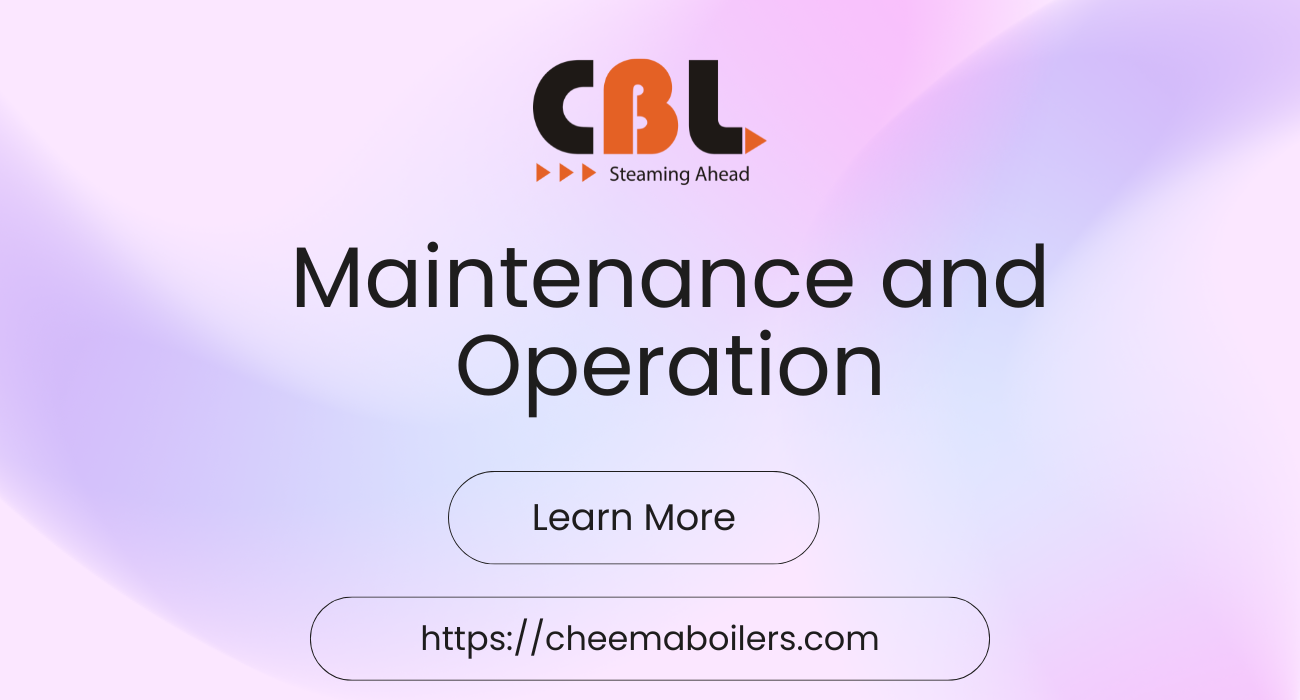When it comes to industrial steam generation and power production, selecting the right combustion technology is essential for efficiency, fuel economy, and regulatory compliance. Two of the most widely used technologies in solid fuel-fired boilers are Atmospheric Fluidized Bed Combustion (AFBC) and Circulating Fluidized Bed Combustion (CFBC). While both are based on fluidized bed principles, they differ significantly in their design, fuel handling, combustion efficiency, and operational performance.
Let’s compare AFBC and CFBC across the most critical technical parameters to help you decide which one is better suited for your industry.

1. Combustion Technology
AFBC boilers operate with a fluidized bed of inert material (typically sand), where fuel particles are suspended using low-velocity air from the bottom. Combustion occurs in this dense bed, offering uniform temperature distribution and good fuel-air mixing. The bed height is fixed, and only finer ash particles exit with the flue gases.
CFBC boilers, in contrast, use higher air velocities that lift fuel and bed material throughout the combustion chamber. This mixture is then separated in a cyclone and recirculated back into the furnace. The circulating loop allows extended combustion time and better mixing, which improves fuel burnout and overall efficiency.
Verdict: CFBC offers more complete combustion, especially for difficult fuels, due to the continuous recirculation and longer residence time.

2. Fuel Flexibility
AFBC boilers can handle a wide variety of fuels including coal, lignite, rice husk, biomass, and industrial slop. However, their ability to burn fuels with high moisture or very high ash content is somewhat limited. Combustion efficiency drops significantly when fuel quality deteriorates beyond a certain point.
CFBC boilers are designed for even more fuel flexibility. They can efficiently burn low-grade coal, petcoke, high-moisture biomass, and waste-derived fuels like RDF. Thanks to the circulating loop and higher turbulence, unburned fuel particles are re-injected until fully combusted.
Verdict: CFBC is clearly superior in handling poor-quality and waste fuels effectively.

3. Combustion Efficiency and Emissions
AFBC systems generally operate with a combustion efficiency of around 85–88%. While that is sufficient for many industrial applications, emission levels of NOx can be relatively high due to the higher bed temperature and limited control over combustion dynamics.
CFBC systems can achieve combustion efficiency above 90%. Because they operate at lower bed temperatures, the formation of NOx is significantly reduced. Additionally, in-bed desulfurization using limestone is more effective in CFBC, allowing easier compliance with SOx emission norms.
Verdict: CFBC delivers higher efficiency and lower emissions, making it better for industries under strict environmental regulations.

4. Maintenance and Operation
AFBC boilers are relatively simple in construction and easy to operate. With fewer moving parts and a less complex flow path, they require minimal maintenance. Plant staff with basic boiler experience can manage routine operation and upkeep.
CFBC boilers, on the other hand, are more sophisticated. The presence of cyclones, recirculation ducts, and more intensive air systems demands better instrumentation and trained manpower. Maintenance requirements are higher, but so is the operational stability when properly managed.
Verdict: AFBC wins in simplicity and ease of operation, especially for small-to-medium industries with limited technical resources.

5. Cost Consideration
AFBC boilers typically involve lower capital costs due to their simpler design. Installation, erection, and commissioning are faster and less expensive. Operating costs are also lower when using good-quality fuel.
CFBC boilers come at a higher initial investment. The additional components for circulation, ash handling, and cyclone separators increase both cost and complexity. However, the ability to burn cheaper fuels and achieve better efficiency can lead to significant operational savings over time.
Verdict: AFBC is more cost-effective for basic applications, while CFBC provides better returns in high-load or fuel-variable environments.

6. Suitable Applications
AFBC boilers are ideal for industries such as textiles, food processing, paper, and smaller captive power plants. Their compact size, lower cost, and quick response to load changes make them suitable for steady operations with predictable steam demand.
CFBC boilers are better suited for large-scale power generation, cement, steel, waste-to-energy, and process plants where fuel quality is inconsistent, emissions are tightly regulated, and steam loads are higher.
Verdict: AFBC suits small to medium industries with good-quality fuel. CFBC fits large, fuel-diverse plants demanding high efficiency and lower emissions.

Final Verdict: Which One Should You Choose?
Both AFBC and CFBC boilers have their own strengths and are successful technologies, widely implemented across the globe. If your industry requires a moderate steam load, has reliable access to standard fuels, and operates on a tighter budget, then an AFBC boiler from Cheema Boilers Limited will serve you effectively with lower capital cost and ease of use.
However, if you’re dealing with low-grade, high-ash, or waste fuels, require larger steam capacities, or operate in a strictly regulated emission environment, then a CFBC boiler will be a smarter, long-term investment that delivers better efficiency and environmental compliance.
Cheema Boilers Limited offers both AFBC and CFBC technologies—custom-engineered to match your operational goals, fuel type, and budget. Our team is ready to help you evaluate your options and design a boiler system that maximizes performance while minimizing operational costs.

